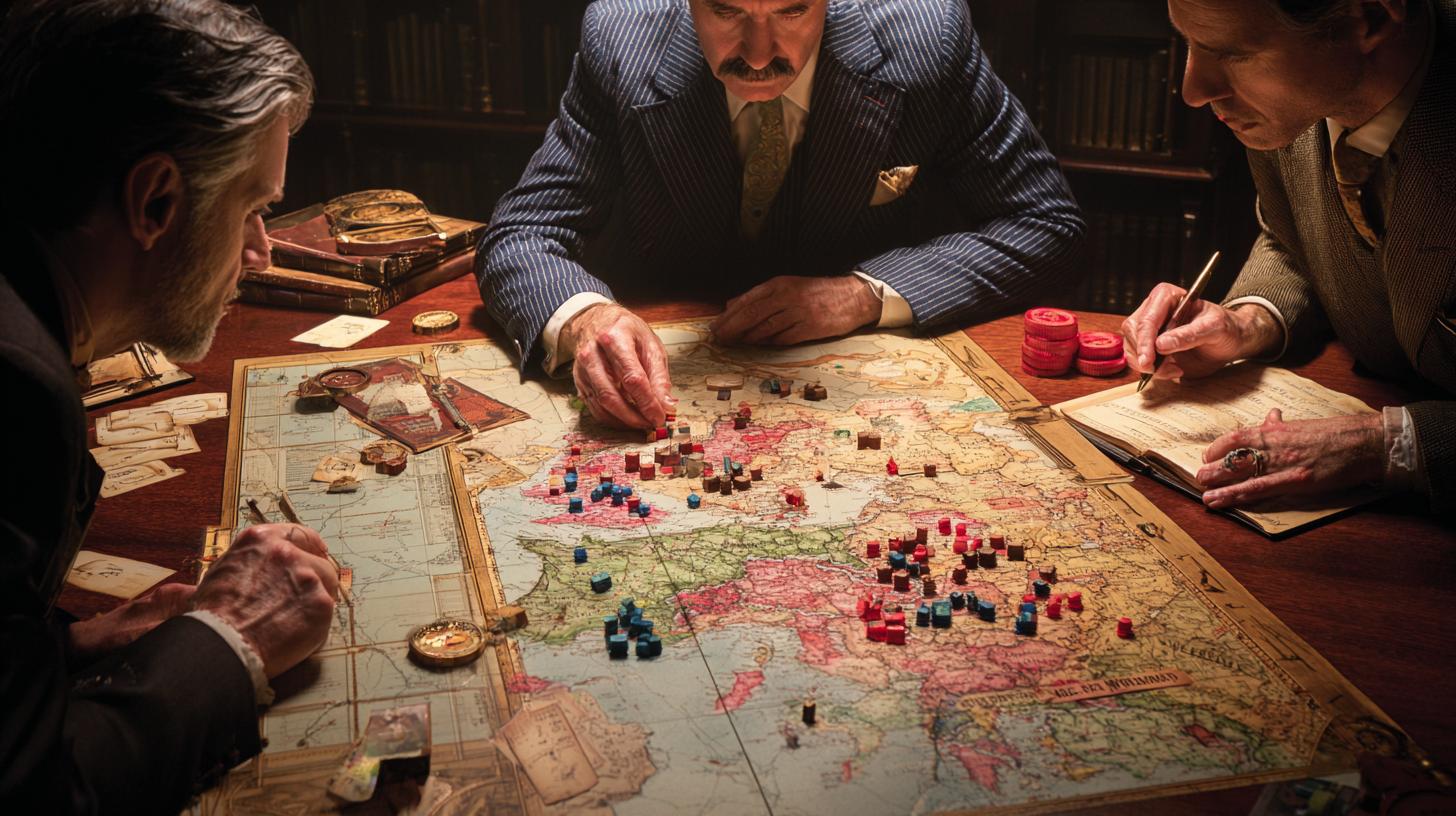Mastering Diplomacy Endgame Strategies: Your Blueprint for Final Victory
Whether you’re negotiating high-stakes treaties in a board game or navigating complex international talks, diplomacy endgame strategies can make or break your success. In this article, you’ll discover how to transition seamlessly from midgame maneuvers to powerful closing tactics that secure your objectives. We’ll explore the critical phases, unpack proven negotiation endgame methods, and equip you with actionable tips to optimize resource allocation, alliance management, and information control. By understanding both historical case studies and modern scenarios, you’ll gain the insight needed to anticipate your opponents’ moves and position yourself for ultimate triumph. Ready to transform your approach to the final phase of diplomacy? Let’s dive into the must-know endgame strategies that separate champions from the rest.
Understanding the Diplomacy Endgame
Defining the Endgame Phase in Diplomacy
The endgame of diplomacy refers to the final stages of any negotiation or strategic interaction, where the balance of power is narrow and every decision carries heightened weight. During this period, fewer resources remain to influence outcomes, and alliances often shift in response to new incentives. Whether you’re focusing on supply centers in the classic board game Diplomacy or closing a business merger, the endgame demands precision, foresight, and adaptability. Recognizing the transition point from midgame to endgame is crucial. It’s the moment you must pivot from broad alliance-building to laser-focused tactics that lock in your gains.
Why Endgame Strategies Matter
Endgame strategies are the difference between a near-miss and a decisive victory. In diplomacy, the final phase magnifies every advantage and exposes every weakness. A well-timed alliance betrayal or a last-minute territorial push can shift momentum dramatically. Moreover, opponents often become more desperate as options dwindle, creating opportunities for creative deals or strategic bluffs. By mastering endgame tactics, you ensure your long-term planning pays off and minimize the risk of an opponent overturning your lead at the eleventh hour.
Core Diplomacy Endgame Strategies
Positioning and Resource Allocation
Critical Territories and Supply Centers
Identifying which territories or resources will deliver the highest leverage is paramount. In board game terms, this might mean capturing supply centers; in real-world diplomacy, it could involve securing trade routes or exclusive agreements. Focus on areas that enhance your negotiation power and force opponents to react on your terms.
Timing Your Moves
Effective timing turns a good strategy into a great one. Delaying a key move until just the right moment can catch adversaries off guard, preventing them from mounting an effective counter. Analyze turn orders or meeting schedules to pick the optimal instant for your decisive action.
Alliance Management and Betrayal
Trust-building Measures
Even in the endgame, alliances can be your greatest asset. Reinforce trust through transparent commitments—share intelligence or offer conditional support. This builds goodwill and can deter opponents from aggressive tactics that might backfire in a three-way standoff.
Calculated Betrayals
Sometimes, the best move is a betrayal. However, it must be calculated and executed with precision. Announce your intentions at the moment when the betrayal yields maximum disruption, leaving rivals scrambling to reconfigure their alliances. Remember: a poorly timed backstab can unite opponents against you instead of crippling them.
Information Control
Communication Channels
Maintaining exclusive communication channels gives you a strategic edge. Private messages, secure calls, or encrypted documents can ensure your plans remain confidential until implementation. This keeps rivals guessing and unable to preempt your final strategy.
Disinformation Tactics
Strategic misinformation can redirect opponent resources toward decoys, freeing you to concentrate on the real objective. Spread a harmless rumor about a planned move in one region, then execute your true strategy elsewhere. Use this sparingly to preserve your credibility.
Practical Tips and Actionable Advice
Scenario Analysis and Contingency Planning
Prepare multiple endgame scenarios based on different opponent actions. Assign probabilities to each possibility, then draft tailored responses for each. This reduces decision-making stress when the endgame heats up and helps you respond swiftly to unexpected developments.
Adapting to Opponent Behavior
Watch for behavioral cues—hesitation, sudden shifts in communication patterns, or new alliances. These signals often reveal hidden agendas or weaknesses. By adapting on the fly, you can exploit gaps and maintain the initiative throughout the closing phase.
Leveraging Third-Party Mediators
Mediators can introduce fresh incentives to break negotiation deadlocks. Whether it’s a respected neutral party in international diplomacy or a rulebook in a board game, their involvement can push rivals toward compromise. Use mediation to validate your proposals and create external pressure on stubborn adversaries.
Case Studies and Real-World Examples
Historical Diplomacy Endgames
One classic example is the Cuban Missile Crisis of 1962. Both the United States and Soviet Union engaged in high-stakes brinkmanship before secretly agreeing to withdraw missiles. The endgame strategy blended public posturing with covert negotiations—an exemplary model of timing and information control.
Modern Negotiation Scenarios
In corporate mergers, final terms often hinge on late-stage concessions over board seats or intellectual property. For instance, the 2018 TechCo-DataCorp merger was postponed over a single clause on data governance. The eventual breakthrough came from an off-the-record compromise facilitated by a neutral legal advisor.
Overcoming Common Challenges
Dealing with Unpredictable Allies
Allies can flip unexpectedly in the endgame. Always maintain backup alliances or side negotiations to cushion the blow of a sudden betrayal. Keep at least one channel open with a potential replacement to stay resilient under pressure.
Handling Resource Scarcity
As resources dwindle, prioritize actions that yield the highest return on investment. If you lack military units in a game, focus on diplomatic solutions. In real-world talks, if funding is limited, propose cost-sharing models to sustain momentum without overextending your budget.
Charting Your Path to Final Victory
With these diplomacy endgame strategies in hand, you’re ready to conquer the final phase of any negotiation or negotiation-based game. Remember to remain adaptable, trust your preparations, and seize the moment when opportunity knocks. Now it’s your turn: apply these tactics in your next diplomatic challenge and watch your influence soar. If you found this guide helpful, subscribe to our newsletter for more expert insights, share your success stories in the comments below, and start rewriting the playbook on how endgames are won.


